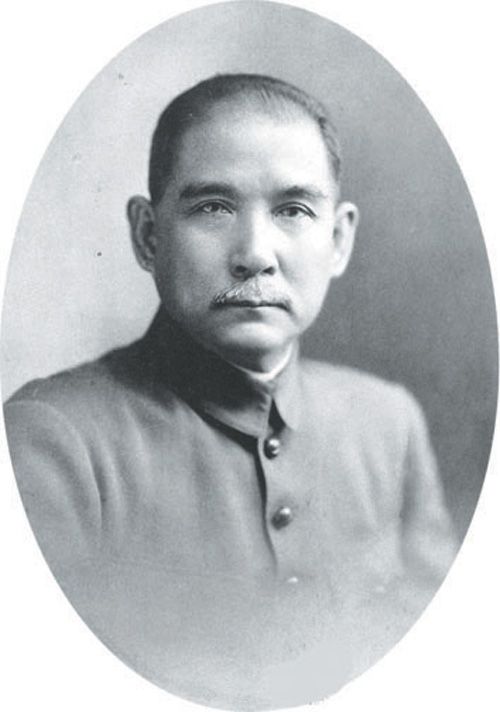Sun Yat-sen (1866-1925)
Sun Yat-sen is a megalith in the annals of 20th century Chinese history. He was an ardent revolutionary, co-founder of the Kuomintang (KMT), and is widely regarded as the father of modern China.
Born into a humble farming family in the Guangdong countryside near Macao in 1866, Sun's life changed at 13 when he moved to Hawaii where his elder brother had made a small fortune as a merchant. He studied at Oahu College and focused on Western science. But this period of Sun's life proved equally fruitful outside of the lecture room. He became fluent in English and digested a range of political ideologies that would influence him for the rest of his life.
Sun returned to his hometown in 1883 and, in accord with his family's will, married Lu Muzhen with whom he had three children. But Sun was a restless soul and disliked the backwardness of rural life and moved to Canton, modern-day Hong Kong. He enrolled in medical school from which he graduated in 1892.
Throughout these years of study Sun continued to foster a passion for politics and he grew increasingly perturbed by the frailty of the Manchu government and its inability to protect China from foreign powers, such that in 1894 he abandoned his medical practice to pursue revolutionary ambitions.
Sun dreamed of establishing China as a republic and founded the Revive China Society in 1895 with other likeminded individuals in the Hong Kong region. The Society had lofty ambitions, which were undermined when Sun was forced into exile following the discovery of an uprising plot. Many of his associates were executed under Imperial orders and he did not return to the mainland for the next 16 years.
Sun spent the intervening years travelling around the United States, Britain, and Japan raising funds and publically criticizing the flaws of China's imperial system. Sun spent a considerable portion of these years in Tokyo and it was during this time that that he became increasingly popular among student groups and his Three Principles of the People doctrine began to receive broad acclaim.
 |
| Sun Yat-sen |
Sun's hardships continued when the Japanese government expelled him from the country and Sun travelled to the United States waiting anxiously for an opportunity to return to his homeland. The news in October 1911 of a military uprising spreading through the Yangtze River Valley was all the impetus Sun needed to board a China bound boat and join the revolution. Upon his arrival he was elected president of the provisional government in Nanjing and symbolically declared the establishment of the Republic of China on the first day of 1912.
However, peaceful idealism didn't last long and fractious in fighting among leading Chinese government officials soon forced Sun into yet another exile with Yuan Shikai wielding control and attempting to establish a monarchy. Sun eventually resettled in Shanghai in 1916 and with his new wife Soong Ching Ling at his side he used the city as a base to formulate plans, commit his political beliefs to paper, and whip up revolutionary support.
Sun believed that a military conquest was the only way for the total unification of China to be realized and accordingly set up several key KMT training bases in the Guangdong region. It was during this phase that Chiang Kai-shek rose to prominence in KMT under Sun's tutelage. Despite the growing firepower of the KMT and Sun's reelection in 1919 to president of the organization, national instability ensured that little progress was made.
Perhaps Sun's final significant political maneuver was the increasingly radical direction he steered the KMT. The early 1920s found Sun increasingly deluded with the support provided by Britain and the United States, a frustration that manifested in the Sun-Joffe Manifesto with the Soviet Union in 1923. This agreement secured sizable military support and overseas training for KMT forces.
However, despite the KMT's relatively strong position in South China, the north was divided between powerful rival warlords. In 1925 Sun toured Japan and North China to propagate his central ideas and his speeches from this journey have become his most iconic. The trip would prove to be his last and Sun passed away at Peking Union Medical College on March 12, 1925.
Although Sun didn't live to see his dreams fully realized, his central ideology of nationalism, democracy, and livelihood of the people continues to hold weight in 21st century China.



 Print
Print Mail
Mail

